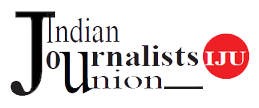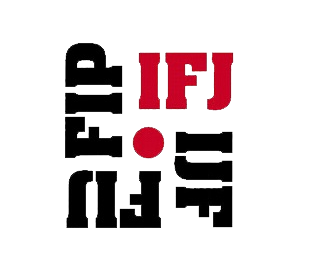~Geetartha Pathak
Circulation of fake Whatsapp messages and forwards about victims being child-lifters or cattle thieves is leading to such barbaric acts where mobs are attacking unknown persons. Three people were killed and nine others injured in mob violence in Andhra Pradesh and Telangana.
Social media, Whatsapp and all other internet based digital platforms are outperforming the traditional media. Investigating agencies, police, social organizations, politicians, criminals, extremist organizations, online marketers and others are extensively using the new media platforms for propagating their causes or misleading people for ulterior motives. However the high end users of this digital media are political parties, its leaders, criminals and extremists. In India the BjP is using this new media so extensively that no other political parties can match it. The digital wing of the ruling party is as big as its burgeoning propaganda budget.
Rumours of children being kidnapped and killed, allegedly for their body parts, spread over Facebook and WhatsApp, have recently gathered momentum across the country. Three persons were lynched in two separate incidents on 13 june. While two were beaten to death in a jharkhand village over alleged cattle theft, one person was killed in West Bengal's Malda district over charges of child lifting. Incidents of people being lynched by irate mobs were reported from different parts of the country over the past month. Such reports come from Tamil Nadu, Karnataka, jharkhand, Telangana, Alwar and Chennai and now from Assam. Circulation of fake Whatsapp messages and forwards about victims being child-lifters or cattle thieves is leading to such barbaric acts where mobs are attacking unknown persons. Three people were killed and nine others injured in mob violence in the southern neighbouring states of Andhra Pradesh and Telangana last month in what police claim to be a wave of social media-inspired lynching. Last year seven people were lynched by villagers in different parts of jharkhand on the same day, over suspicion that they were child lifters.
The entire Assam was overcome with grief when the news came of lynching of Nilotpal Das and Abhijit Nath, two youths from Guwahati on june 8 in the remote Panjuri Kachari village under the Dokmoka police station in Karbi Anglong district on suspicion of being child lifters. Some miscreants spread the news through social media and Whatsapp that two child lifters had entered the village. The frenzied mob battered the two youths - who were nature lover and had driven to a picnic spot in the area from Guwahati. The video clips that went viral reportedly taken by the attackers of the gory attack and the victims praying for life by pleading innocence had affected the psyche of common people of the state. Earlier, in February two Sikh men were beaten by a mob on suspicion of being child snatchers.
After the incidents of social media propaganda induced lynching of two Guwahati youths the Assam government has ordered strict vigilance on social media platforms. Some social organizations are also up against rumours and fake news circulated on social media. It is difficult to check rumours, fake news, incendiary matters etc in social media unless the social media platforms cooperate and the impugned contents are made public. However the moot point is how we will demarcate a rumour or fake news from the genuine one. unless an acceptable universal definition of these terms is evolved it is difficult to monitor the new media platforms. The government nowadays suspends internet to dispel social activists and organizations from staging protest or demonstrations not palatable for the government. However people are helpless and they do not have the power to stop the false propaganda, misinformation of the powerful political forces to garner votes or to win popular support of a section of vulnerable people.
The social organizations and activists from across the world now organize demonstrations, protest and other agitational programs. Arab springs uprisings and occupy Wall Street are two such successful social media induced movements. The new media can be used by everyone while the traditional media was controlled by a few, especially by the corporate. The powerful classes are now worried because the empire of media has fallen from the control of a handful of people to masses.
Extremist organizations and antisocial elements are using new media as a tool to spread hatred and perpetuate crime. Eleven days before Shujaat Bukhari, Editor in Chief of Rising Kashmir was assassinated by three unidentified gunmen in Press Enclave, Srinagar; a blog post propagated that Bukhari was betrayer of the Kashmir struggle. According to the Hindustan Times before he was killed, Bukhari had spoke about his fears regarding the online smear campaign. The same blog also named a few other journalists as betrayers who attended Track-II dialogue in Dubai last year. The targets have been labeled as "betrayers of the struggle of Kashmir and for carrying out the dirty work of defaming (the) Kashmir cause." A day after Bukhari was assassinated; the blog titled the incident as 'condemnable' but openly pleaded that the victim's actions could not be 'washed away by his demise'. Unfortunately the police have failed to stop such inflammatory propaganda by the particular blog.
All technological and scientific inventions can be used for both -the betterment of mankind and for evil purposes. We cannot ban or throw out the technology or the scientific invention for fear of its misuse by some wicked elements. The government cannot infringe the constitutional fundamental right to expression for fear of its misuse by some unscrupulous elements.
Responsibility is prerequisite of such kinds of media and public platform. Press Council of India (PCI), a statutory, quasi-judicial body self regulatory body of media was formed in 1966 when print media was only form of media. PCI was functioning since then though it was not given enough power to discipline leading to the criticism of its being a paper tiger. The PCI proposed many times the government to redesign PCI as a media council bringing the electronic and web media under its jurisdiction. The successive governments ignored the PCI's proposal assumedly under pressure from the corporate controlled management of media houses. However a section of big newspapers which are under the purview of the PCI are deliberately violating established journalistic norms and indulging in sensationalism. Recently the Delhi High Court ordered 12 media houses that include a section of big newspaper houses, TV channels and web portals to pay Rs 10 lakh each for violating norms and revealing identity of the 8-year-old girl gang raped and murdered in jammu and Kashmir's Kathua district. While the government has failed to regulate the mainstream media its extra interest in taming the social mass media looks irrational. It is not that the social media should not be regulated. The government must work out a mechanism with conformity to the constitutional right of freedom of expression to instill sense of responsibility among the users of the new media.
The new media has given the right to expression of common people a new and wider dimension. The government not only should extensively use the new media platform in governance for increasing its efficiency and also bringing transparency, it should also encourage the use of this new digital platform by the people rather than restricting its use.




